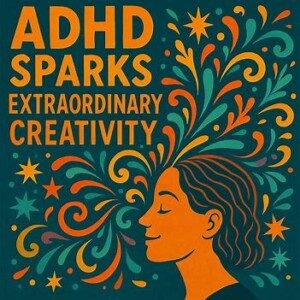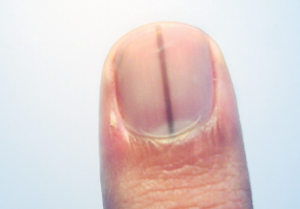
Ever notice how people with ADHD often come up with the wildest, most original ideas?
Scientists are starting to confirm what many already suspected — that ADHD’s “wandering mind” might actually be fueling creativity.
Before angrily ordering that distracted child to sit still and keep their hands quiet, maybe put some art supplies before him or her and see what happens!
Research presented at the European College of Neuropsychopharmacology (ECNP) congress in Amsterdam found a clear link between ADHD, creativity and mind wandering — when your thoughts drift off on their own little adventure.
The study, led by Han Fang from Radboud University Medical Centre in the Netherlands, is the first to explain how ADHD and creativity are connected.
Fang says in the report that past research has possibly linked the wandering mind in ADHD to creative juices, but there’d been no investigation into whether there’s a direct connection.
To dig deeper, Fang’s team ran two separate studies — one in Europe and another in the UK — involving a total of 750 participants.
Some had ADHD and some didn’t. Studying two different groups allowed the researchers to cross-check the results and make sure the findings were solid, not just a coincidence.
When the Mind Wanders, Magic Happens
Everyone’s mind drifts sometimes — like when you realize you’ve been daydreaming in the middle of a meeting or zoning out while on a treadmill or stationary bike.
And unfortunately, daydreaming can also occur while driving.
But for people with ADHD, this kind of mental detour happens way more often.
The researchers wanted to know if that constant stream of thoughts might actually spark more creative ideas.
The team looked at how ADHD traits — like inattention, impulsivity and a tendency to switch focus quickly — interacted with imaginative thinking and mind wandering.
Not surprisingly, participants who had stronger ADHD traits also reported higher levels of mind wandering.
But not all wandering minds are the same. The report points out that there are actually two main kinds.
- Spontaneous mind wandering – when your thoughts drift without you realizing it, like spacing out mid-task, while showering or in between sets at the gym.
- Deliberate mind wandering – when you let your mind drift on purpose, on a more conscious level.
Both types can fire up ideas, but deliberate wandering — when you consciously give yourself permission to drift — might be especially powerful for visionary thinking.
Measuring Creativity
To measure creativity, researchers used standard tests — for example, asking people to come up with innovative uses for ordinary objects, like a paperclip or a brick.
The more original or flexible their ideas, the higher they scored on creativity.
Across both studies, people who had more ADHD traits also tended to score higher on creative achievement.
The researchers found that deliberate mind wandering played a big role — the more someone intentionally let their mind explore different thoughts, the more creative they were.
Mind wandering, especially in a purposeful sense, was tied to higher creative flow in ADHD’ers, says the report.
Turning a “Distraction” Into an Advantage
What’s exciting about this research is that it could actually help shape better support for people with ADHD and de-stigmatize this neurodivergent condition.
For example, programs could be designed to help people channel spontaneous ideas into imaginative projects, turning what’s often seen as being “scatterbrained” into being original or ingenious.
On the therapy side, mindfulness-based approaches could be tweaked for ADHD — not necessarily to eliminate mind wandering, but to help people guide it in more productive directions.
This kind of approach could help reduce some of the daily challenges that come with ADHD while boosting the natural creativity that often accompanies it.
The report mentions that more research is needed to confirm the findings.
ADHD Strength
Many of the most groundbreaking thinkers — inventors, artists, entrepreneurs — have admitted to having restless, easily distracted minds. Maybe this was their ADHD.
The very thing that makes focusing hard might also make it easier to think outside the box, connect unrelated ideas and come up with fresh perspectives.
This sounds like a feature of Level 1 autism (minimal support needs), and in fact, some traits of Autism Spectrum overlap with those of ADHD. This includes hyperfocus. Yes, ADHD comes with hyperfocus, despite the distractibility component.
So maybe the next time your mind drifts off mid-conversation or you catch yourself daydreaming instead of ticking off your to-do list, don’t be too hard on yourself.
That mental detour could be your brain’s way of connecting dots no one else even sees.


























